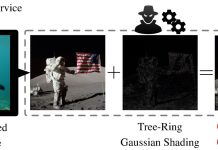
The rise of “self-driving labs” in chemistry and materials science is reshaping how research and discoveries are made.
These innovative labs, powered by artificial intelligence (AI) and automation, promise to significantly speed up the process of finding new molecules, materials, and manufacturing techniques.
From electronics to pharmaceuticals, the potential applications are vast and varied. Yet, as this technology is still in its early stages, there’s a pressing need for standard definitions and performance metrics to better evaluate and compare these systems.
Milad Abolhasani, an associate professor of chemical and biomolecular engineering at North Carolina State University, and his colleagues have recognized this gap.
They argue that the current lack of standardization makes it challenging to assess the true capabilities and improvements needed in self-driving labs.
Without a common framework, it’s difficult to understand what one lab does well and how its successes could inform and enhance the performance of others.
To address this issue, Abolhasani’s team is proposing a set of shared definitions and seven specific performance metrics for self-driving labs.
These metrics are designed to be included in any published research involving such labs and cover a range of essential aspects, including:
- Degree of Autonomy: This measures how independently the system can operate without human intervention.
- Operational Lifetime: This assesses the duration a system can function before needing user involvement.
- Throughput: This evaluates the time required for the system to conduct a single experiment.
- Experimental Precision: This gauges the reproducibility of the system’s results.
- Material Usage: This calculates the total materials consumed by the system for each experiment.
- Accessible Parameter Space: This considers how well the system can manage and account for the variables in each experiment.
- Optimization Efficiency: Although complex, this crucial metric requires researchers to quantitatively analyze their self-driving lab’s performance, especially in terms of its experiment-selection algorithm, and compare it to a baseline like random sampling.
The goal of these metrics is not only to facilitate comparison and learning among different research teams but also to ensure the reliability and reproducibility of results produced by self-driving labs.
By adopting a standardized reporting approach, the field can move towards generating high-quality, trustworthy data that fully leverages the capabilities of AI-driven research.
Abolhasani’s proposal, detailed in their open-access paper published in Nature Communications, represents a significant step towards advancing the efficiency and effectiveness of self-driving labs.
By clarifying what these labs can achieve and establishing benchmarks for their performance, the scientific community can better harness the transformative potential of this technology, driving faster, more innovative discoveries across chemistry and materials science.
The research findings can be found in Nature Communications.
Copyright © 2024 Knowridge Science Report. All rights reserved.



